Bangkok | Supermarket chains regularly present innovative store concepts of the future. Thailand-based Lotus's is no exception, especially when partnering with a mobile communications company. Shopping at Lotus's includes flashing lights, sounds, and glittering displays, with robots and digital signage enhancing the experience.
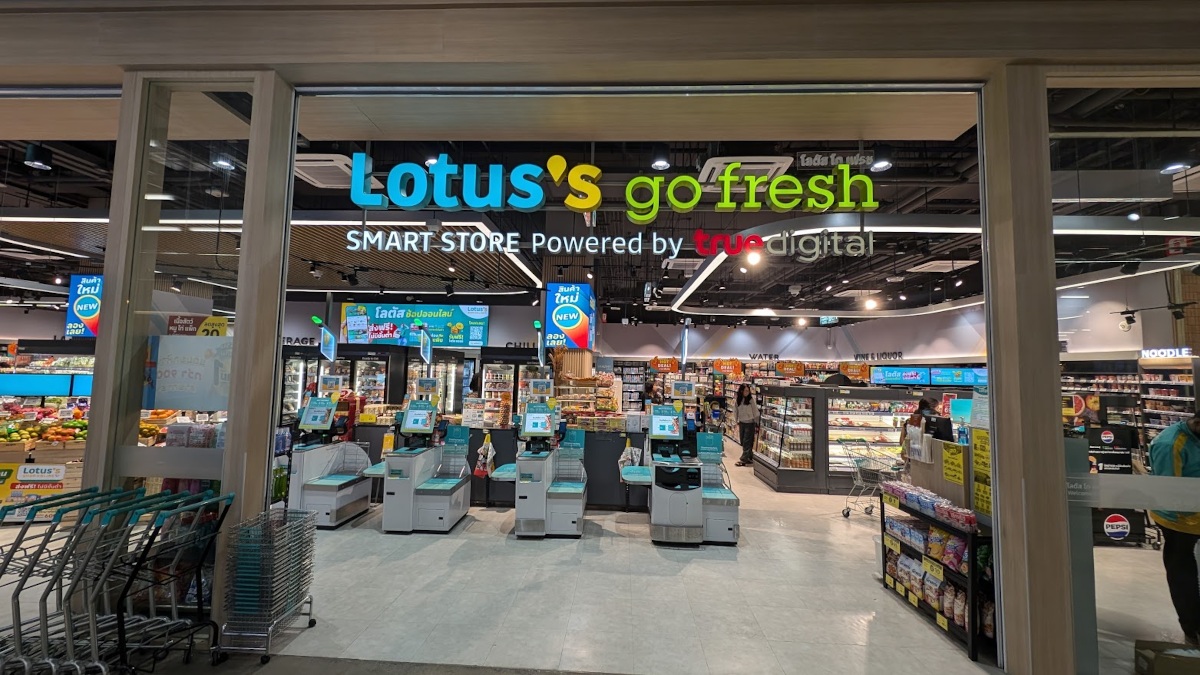
Lotus’s: The Digital Supermarket of the Future
Western supermarket managers are often amazed when they experience Lotus’s supermarket digital initiatives in Thailand. The Thai chain consistently enhances digitization by integrating apps, e-commerce, and digital touchpoints at the point of sale (PoS).
Autonomous Lotus’s stores are already operating in Thailand, despite the country’s relatively low personnel costs. This shows that customer-oriented digitization at the point of sale (PoS) or in quick-service restaurants (QSR) is essential today, regardless of wage levels (invidis report).
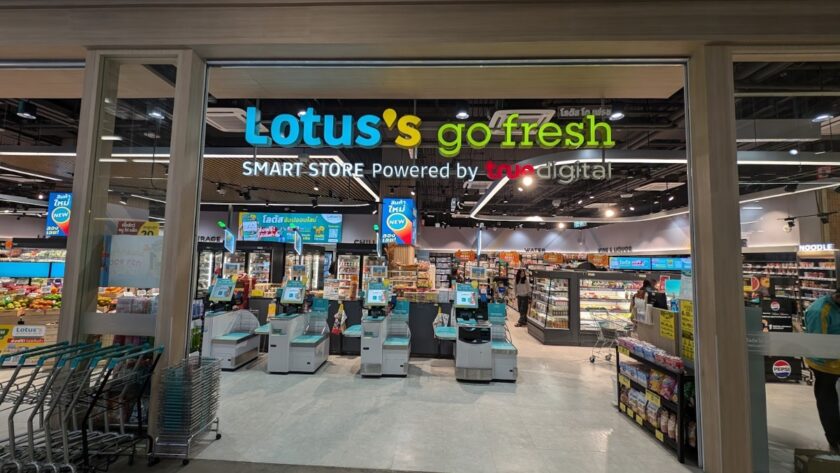
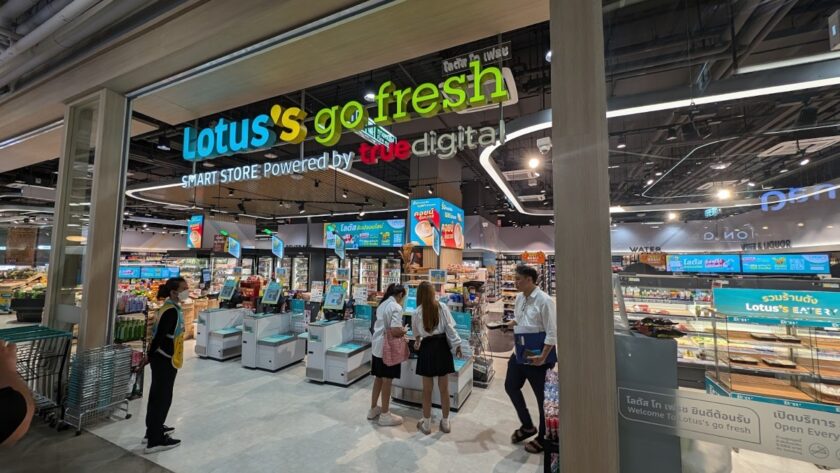
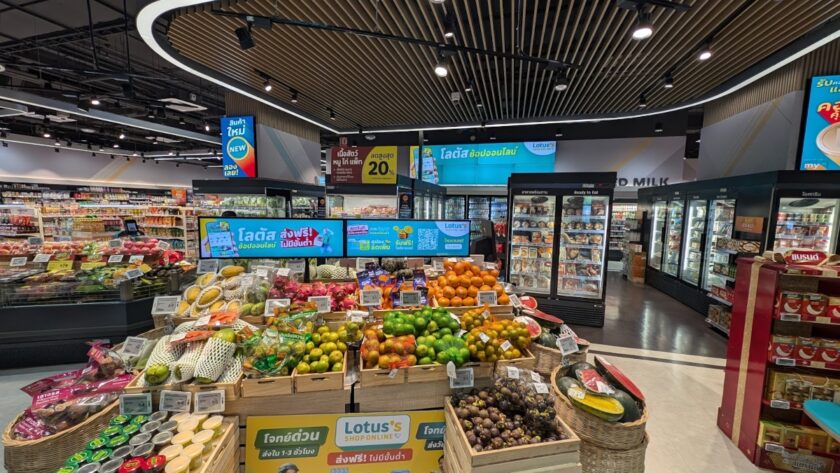
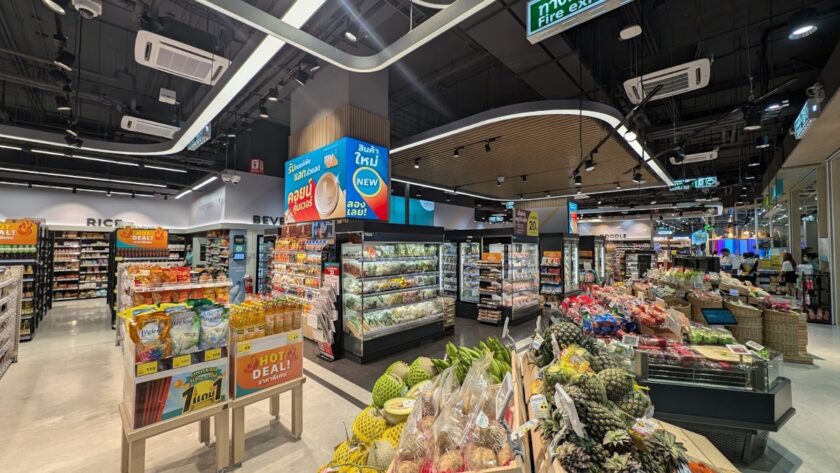
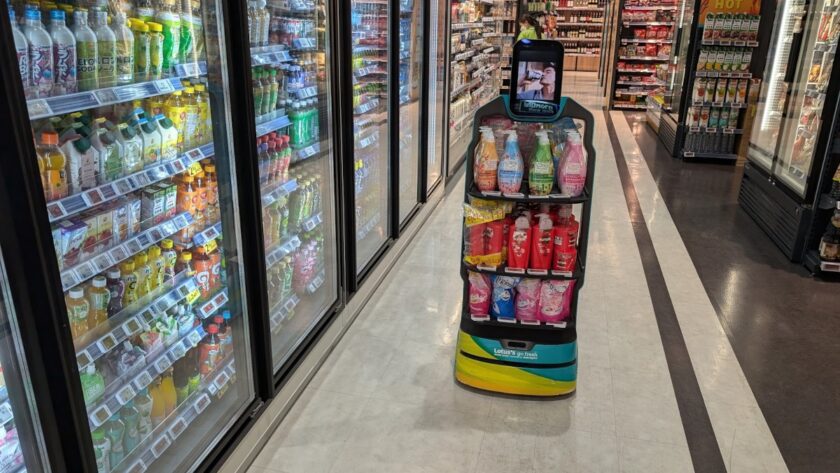
True Digital Park: Digitization taken to the next level
invidis visited the Lotus’s go Fresh Smart Store in the True Digital Park in Bangkok. A pilot store that takes digitization to the next level. Here, new solutions are tested in practice in a digitally-savvy environment. Rolling way-guiding robots greet shoppers in front of the store and take them to the shelf as quickly as possible after they enter the product category. Other robots act as moving shelves filled with promotional items and attention-grabbing digital signage displays.
Of course, the relatively small sales area in the innovation park is packed with digital signage. Large LED-based pillar wraps, LCD video walls and stretched displays above the product displays. Bar-type displays are currently quite popular in many supermarket concepts – not only at Lotus’s in Thailand but also in European supermarket concepts.
It has become a global trend for retail architects to prefer lower shelves, giving stores a visually lighter appearance. Tall shelves reaching just under the ceiling, common in the past, are now less frequently used in modern retail concepts. This allows space above the shelves for narrow bar-type displays, like those integrated in Lotus’s stores.
The checkout process takes place at manned checkouts and not at self-checkout terminals. Perhaps a conscious decision to give the digital store one human touchpoint. It would certainly be consistent to integrate SCO terminals here, too.
The store concept still works very well several years after opening. Digital signage touchpoints function effectively, and the content is appropriate. The only thing missing are the ESLs in the promotion areas – even in the digital market of the future, there is still a little space left for analogue.
- ISE 2026: “Spark” Launches as a New Showcase for the Creative Industries
- M-Cube: “Digital Signage Touches Hearts and Moves Wallets”
- Over 700 Stores: Stratacache Rolls Out Retail Media Network for Iceland Foods
- Germany: DooH Market Surges Over 25% in 2025
- Year in Review 2025/2026: Pontus Meijer | Visual Art

